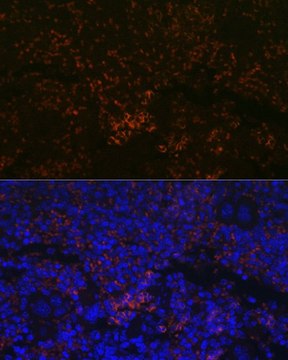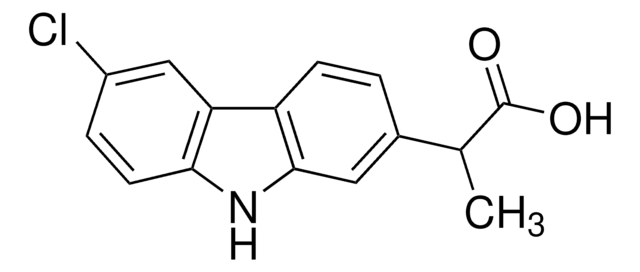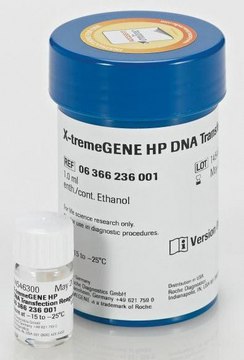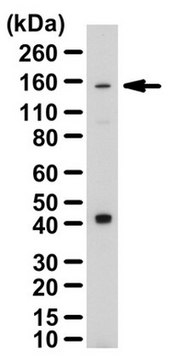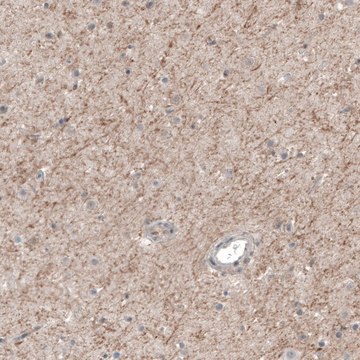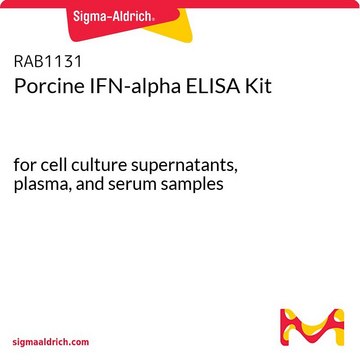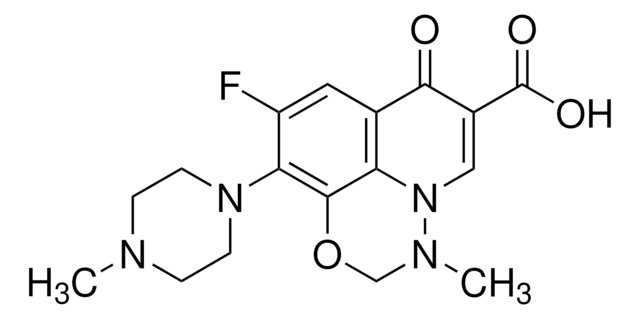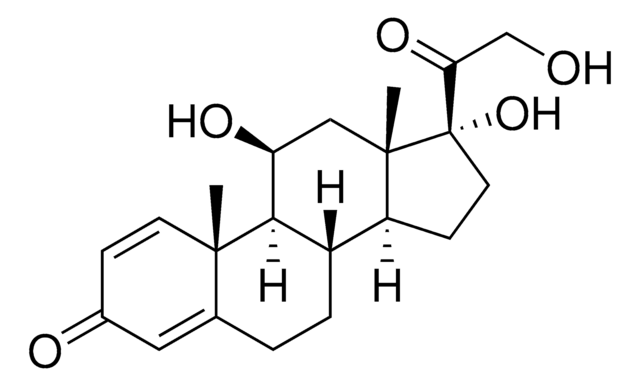推荐产品
生物来源
rabbit
质量水平
偶联物
unconjugated
抗体形式
affinity isolated antibody
抗体产品类型
primary antibodies
克隆
polyclonal
表单
buffered aqueous solution
种属反应性
human
技术
immunohistochemistry (formalin-fixed, paraffin-embedded sections): 16 μg/mL
UniProt登记号
运输
dry ice
储存温度
−20°C
靶向翻译后修饰
unmodified
基因信息
human ... CXCR3(2833)
mouse ... Cxcr3(12766)
rat ... Cxcr3(84475)
一般描述
Chemokines bind to specific G protein-coupled cell surface receptors on target cells. Five CXC receptors (CXCR1-5), nine CC receptors (CCR1-9) and one CXXXC receptor (CX3CR1) have been cloned to date. Expression of chemokine receptors can be restricted to some cell types (CXCR1 is expressed in neutrophils) while others (such as CCR2) are expressed in a wide variety of cells. CXCR-3, also known as the IP-10/Mig receptor, shares approximately 40% protein sequence idENTITY_TYPE_CODE with CXCR-1 and CXCR-2, and 34.2-36.9% amino acid sequence idENTITY_TYPE_CODE with the five known CC chemokine receptors 1-5. CXCR-3 is highly expressed by IL-2-activated T lymphocytes (Th1), but not by resting T lymphocytes, B lymphocytes, monocytes or granulocytes. CXCR-3 binds IP-10 and Mig (but not PF4) with high affinity and mediates Ca2+ mobilization and chemotaxis. CXCR-3 does not bind any of the CXC chemokines containing the ELR motif. CXCR3 expression has been documented in the brain, lymphoid and other peripheral tissues, and in diseases including atheroslerosis, Alzheimer′s, multiple sclerosis, rheumatoid arthritis, lymphomas, asthma, neoplasms, leukemia, and inflammatory conditions of various organs.
Rabbit polyclonal anti-CXCR3 antibody specifically recognizes human CXC Chemokine Receptor 3 by immunohistochemistry with formalin-fixed, paraffin embedded tissues. Not tested for other uses. The immunizing peptide has 82% homology with the rat and mouse gene. Other species reactivity has not been confirmed.
免疫原
synthetic peptide corresponding to the C-terminus of human CXC chemokine receptor 3 (CXCR3), conjugated to KLH. The immunizing peptide has 82% homology with the rat and mouse gene.
应用
Applications in which this antibody has been used successfully, and the associated peer-reviewed papers, are given below.
Immunohistochemistry (1 paper)
Immunohistochemistry (1 paper)
Rabbit polyclonal anti-CXCR3 antibody is used to tag CXC Chemokine Receptor 3 for detection and quantitation by immunocytochemical and immunohistochemical (IHC) techniques. It is used as a probe to determine the presence and roles of CXC Chemokine Receptor 3 in processes such as the mediation of Ca2+ mobilization and chemotaxis.
外形
Solution in phosphate buffered saline containing 0.1% sodium azide.
免责声明
Unless otherwise stated in our catalog or other company documentation accompanying the product(s), our products are intended for research use only and are not to be used for any other purpose, which includes but is not limited to, unauthorized commercial uses, in vitro diagnostic uses, ex vivo or in vivo therapeutic uses or any type of consumption or application to humans or animals.
未找到合适的产品?
试试我们的产品选型工具.
储存分类代码
10 - Combustible liquids
WGK
nwg
闪点(°F)
Not applicable
闪点(°C)
Not applicable
法规信息
新产品
Serena Lunardi et al.
Oncotarget, 5(22), 11064-11080 (2014-11-22)
Pancreatic ductal adenocarcinoma (PDAC) is characterized by an abundant desmoplastic reaction driven by pancreatic stellate cells (PSCs) that contributes to tumor progression. Here we sought to characterize the interactions between pancreatic cancer cells (PCCs) and PSCs that affect the inflammatory
我们的科学家团队拥有各种研究领域经验,包括生命科学、材料科学、化学合成、色谱、分析及许多其他领域.
联系技术服务部门